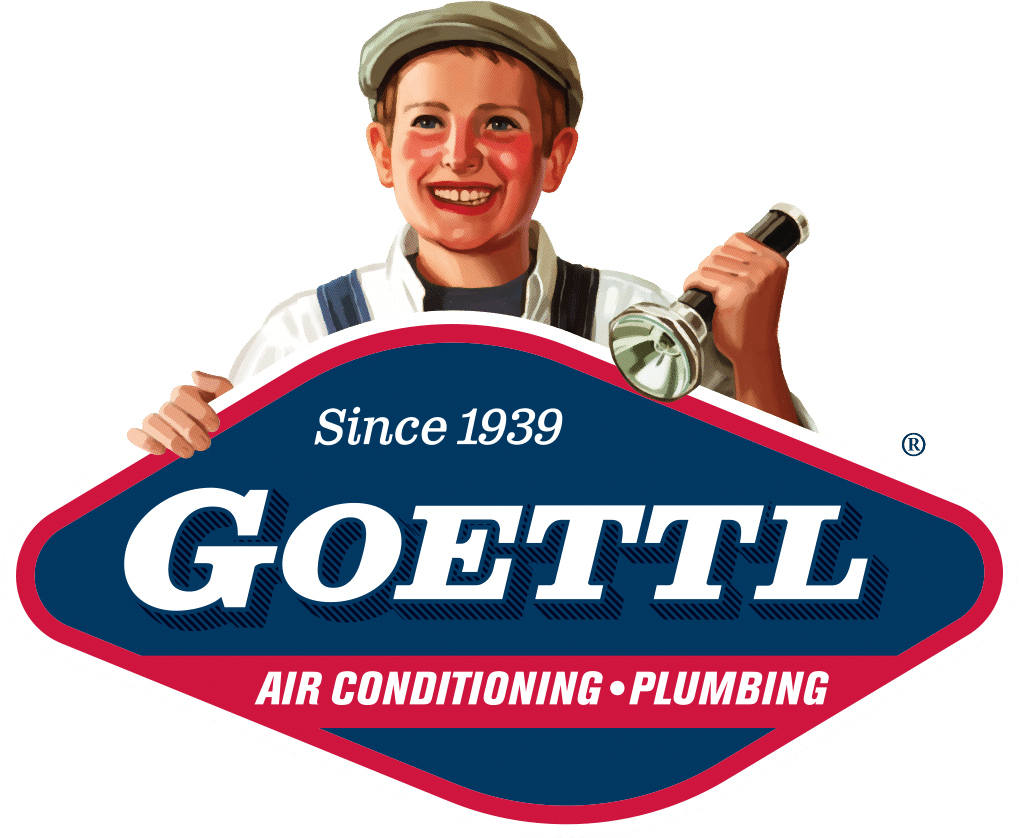
Cooling Your Home More Efficiently (Without Replacing Your System)
Living in any hot climate means your air conditioning system works overtime. The thought of high energy bills can be daunting for homeowners with older or struggling AC units. However, upgrading to a more efficient model is only sometimes financially feasible.
The good news is there are ways to enhance your cooling efficiency without a full system replacement. Follow these tips to save on your cooling costs. And if you need any AC services, remember that Goettl Air Conditioning & Plumbing is here to assist.
Utilize a Zone Control System
While investing in a zone control system may require upfront costs, it’s a more budget-friendly option than replacing your entire HVAC system. With a zone control system, you can set different temperatures for various areas in your home. It allows everyone to stay comfortable without overspending. Each zone is controlled independently using individual thermostats, which regulate electronic dampers in the ductwork to adjust the airflow as needed.
Cost-Effective Cooling Solutions
Investing in a zone control system is a cost-effective alternative to replacing your entire HVAC system. While upfront costs are involved, the long-term savings and comfort benefits make it a wise investment.
Tailored Comfort for Every Room
With a zone control system, you can set a different temperature in different areas of your home according to your needs. It means you can cool occupied rooms more effectively while allowing less-used areas to remain at a higher temperature, saving energy and money.
Individual Thermostats for Precise Control
Each zone in your home has its thermostat, giving you precise control over the temperature in each area. It allows you to set temperatures based on usage patterns and occupancy, ensuring comfort where and when you need it most.
Efficient Airflow Management
The electronic dampers in the ductwork regulate airflow to each zone, ensuring that conditioned air is distributed effectively. It improves comfort and reduces energy waste by delivering air only where it’s needed.
Maintain Your Ductwork
Damaged or compromised ductwork is a common cause of inefficient cooling. If you suspect your ducts are the issue, have them professionally tested, sealed, or repaired. Efficiently cooling your home is much easier when the cooled air can reach its intended destination without leakage.
Professional Ductwork Inspection
If you suspect that your ductwork is compromised, it must be inspected professionally. A qualified technician can identify any issues, such as leaks or damage, and recommend the necessary repairs or sealing.
Sealing and Repairing Ducts
Sealing or repairing damaged ducts is crucial for maintaining efficient cooling in your home. Leaky ducts can waste a lot of cooled air, forcing your HVAC system to work harder and consume more energy. Sealing and repairing ducts can enhance your cooling system’s efficiency and reduce your energy bills.
Improving Airflow and Efficiency
Properly sealed and repaired ducts can improve airflow throughout your home, ensuring cooled air reaches its destination without leakage. It improves the overall efficiency of your cooling system and enhances comfort levels in your home.
Insulation and Ductwork Efficiency
In addition to sealing and repairing ducts, ensuring your ductwork is properly insulated can improve efficiency. Insulation prevents the transfer of heat, allowing cooled air to stay at the desired temperature as it travels through the ducts. Proper insulation can also help reduce energy loss and boost the overall performance of your HVAC system.
Regular Maintenance and Monitoring
Regular maintenance and monitoring of your ductwork are essential for long-term efficiency. Schedule routine inspections to check for leaks, damage, or other issues impacting the performance of your ducts. Additionally, monitor your energy bills for any sudden increases, as this could indicate a problem with your ductwork that needs to be addressed promptly.
Utilize Fans and Ventilation
Fans for the ceiling and exhaust can help circulate air and remove heat from your home, reducing the workload on your AC system. Using fans strategically, such as running ceiling fans counterclockwise during summer to create a breeze, can help you feel cooler without lowering the thermostat.
Ceiling Fans for Air Circulation
Ceiling fans are an inexpensive way to enhance the circulation of air in your home. Run your ceiling fans counterclockwise during the summer to create a breeze that can make you feel cooler. It can raise your thermostat setting without sacrificing comfort, reducing energy consumption.
Strategic Use of Exhaust Fans
Exhaust fans in bathrooms and kitchens can eliminate heat and humidity from your home, reducing the workload on your air conditioning system. Use these fans when cooking or showering to prevent heat buildup and improve overall comfort.
Whole-House Ventilation Systems
Install a whole-house ventilation system to enhance the air quality indoors and reduce the need for air conditioning. It will replace stale indoor air with fresh outdoor air, reducing humidity and pollutants indoors. They can also help lower indoor temperatures, reducing the need for mechanical cooling.
Window Fans for Night Ventilation
Window fans are a great way to cool your home during the cooler evening hours. Place window fans facing outward in windows on the cooler side of your home to draw in cool air from outside. It can help reduce the need for air conditioning overnight, saving energy and money.
Utilize Natural Ventilation
Use natural ventilation to your advantage by strategically opening windows and doors. Cross-ventilation, accomplished by opening windows on opposite sides of your home, can create a natural breeze that helps cool your home. It can be particularly effective in the evening when outdoor temperatures are lower.
Shade Your Home
Shading your home from direct sunlight can reduce heat gain and help maintain a cooler indoor temperature. Planting trees or installing awnings, shades, or blinds can block sunlight and reduce the need for your AC to run continuously.
Planting Trees for Natural Shade
Strategically planting trees around your home ensures a natural shade, reducing the sunlight that enters your home. Deciduous trees, which shed leaves during the winter, can provide shade during the warmer months and allow sunlight to keep you warm in the winter, maximizing energy efficiency.
Installing Awnings for Sun Protection
Awnings installed over windows can block direct sunlight, reducing heat gain in your home. Retractable awnings allow you to control the sunlight entering your home, providing flexibility based on the season and time of day.
Using Shades and Blinds for Sun Control
Interior shades and blinds can be adjusted to block sunlight during the hottest times of the day, reducing the need for air conditioning. Choose light-colored shades to reflect sunlight and heat away from your home.
Applying Reflective Window Film
Reflective window film can be used on windows to lower heat gain by reflecting sunlight. It can help maintain a cooler indoor temperature and reduce the workload on your air conditioning system.
Creating Outdoor Living Spaces
Creating outdoor living spaces, like patios or pergolas, can provide shaded areas for relaxation and entertainment. Spending more time outdoors in shaded areas can reduce the need for indoor air conditioning, saving energy and lowering your utility bills.
Schedule Regular Maintenance
Regular AC maintenance can ensure optimal performance and energy efficiency. By scheduling routine maintenance, every system component can function properly, reducing the energy needed to cool your home.
Professional Inspection and Cleaning
Regular maintenance includes a thorough inspection and cleaning of your air conditioning system by a professional technician. It ensures all components are in good working condition and that potential issues are addressed early, preventing larger problems and costly repairs.
Filter Replacement and Airflow Check
During maintenance, the technician will replace the air filter to ensure proper airflow. A blocked or dirty filter can limit airflow, reducing the efficiency of your system. The technician will also check the airflow to ensure it meets the manufacturer’s specifications.
Checking Refrigerant Levels and System Efficiency
The technician will measure the levels of refrigerant in your system and recharge it if necessary. Low refrigerant levels can indicate a leak, reducing cooling capacity and increasing energy consumption. The technician will also check the overall efficiency of your system and make any adjustments needed to improve performance.
Take Action Now!
Through these strategies, you can boost your air conditioning system’s efficiency and reduce your cooling costs. If you need assistance with your AC system, or are considering upgrades, contact Goettl Air Conditioning & Plumbing for professional advice.








































































































































































































